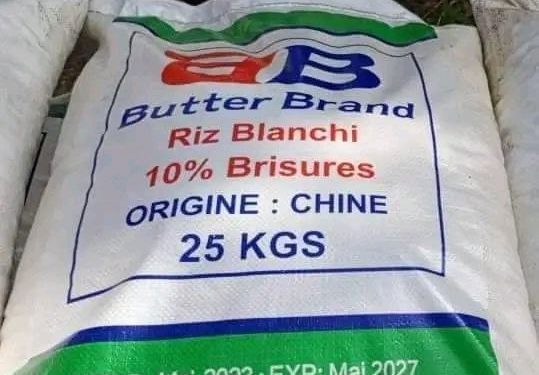The Senior Divisional Officer (SDO) for Ocean Division in the South Region, Nouhou Bello, has sounded the alarm regarding a potentially hazardous brand of imported rice from China circulating within the country.
The alert conveyed through a formal letter to the Head of the Phytosanitary Police Station of the Autonomous Port of Kribi expresses deep concern over the unchecked circulation of the identified rice brand.
Bello’s disapproval stems from the questionable permission granted for the distribution of 2,000 tons of Butter Brand rice out of a larger cargo totaling tons.
The intended destination for this substantial quantity was the Far North Regions and Adamaoua.
Disturbingly, Bello notes in his communication that there has been no proper analysis of samples taken from the cargo, raising serious doubts about the safety of this imported staple.
The origins of this rice brand trace back to Nanjing, China.
Nouhou Bello has categorically labelled the rice as “unfit for human consumption.”
His assertion gains weight as he highlights that this particular commodity was reportedly withdrawn from the Democratic Republic of Congo in October of the same year due to reported deaths in Kinshasa associated with its consumption.
He said, “This commodity coming from Nanjing in China would be unfit for human consumption, and it is said to have been withdrawn from the Democratic Republic of Congo last October for having caused the deaths in Kinshasa.”
“Moreover, it was noted that the phytosanitary import inspection reports were signed on November 8 and 9, 2023, while the ship carrying this cargo docked at the Port on November 12, 2023,” the Senior Divisional Officer added.
Expressing his concern, the Senior Divisional Officer has directed the Head of the Phytosanitary Police Station of the Autonomous Port of Kribi to disclose the current location of the flagged bags of rice.
Bello has emphasised the need for clarity on the exact destination and the places through which these two thousand tonnes of rice were transported.
This information, he insists, is crucial for implementing appropriate measures to prevent tainted rice from entering the market and posing potential health risks to consumers.
As of now, the results of physicochemical, microbiological, and bacteriological analyses crucial for determining the safety of Butter Brand rice are pending.
The outcome of these tests will likely play a pivotal role in guiding the authorities on the necessary steps to safeguard public health and address the alarming situation at hand.
In the face of this potential threat, consumers and relevant stakeholders are anxiously awaiting further updates and actions from authorities to ensure the safety of the food supply chain and protect the well-being of the population.



